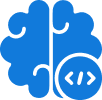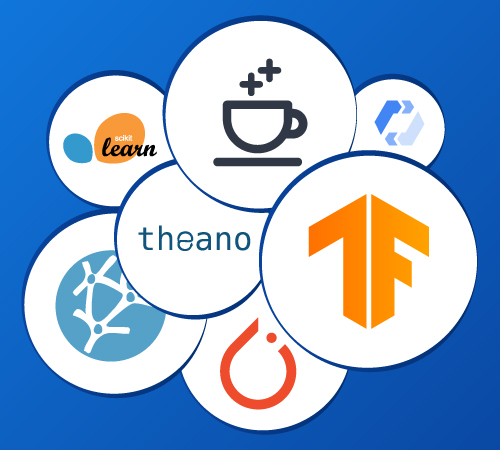Python libraries for data science and machine learning are the first choice of aspiring and experienced data scientists and ML engineers. Depending on the purpose, you can choose the library for data processing, mining and scraping, data visualization, and model deployment.
Python libraries for data science are becoming popular among tech professionals. Python programming language is one of the most widely utilized programming languages by data analysts and scientists. It has more than 137,000 libraries valuable for data mining, visualization, and more. Members of the Python community are always looking for guides to understand top python libraries for data collection, which would help them understand different python packages.
The open-source language is easy to learn and easy-to-debug that helps data scientists solve their everyday problems. Python has vast data visualization, machine learning, deep learning, and data manipulation libraries. However, choosing a feature-rich Python framework can be challenging. Read our comprehensive guide to learn the top 10 python libraries for data science.
10 Python Libraries for Data Visualization
With over 8.2 million active users, Python has grown to be the most widely used language in the world. Frontend, backend, data science, machine learning, artificial intelligence, middleware, deep learning, etc., are a few applications for which Python can be used.
Besides its wide applications and ease of use, the supportive community of millions of experts makes it a top choice for beginners. Below are some python learning libraries that every data analyst and scientist should know.
Pandas
Pandas library in Python is one of the useful libraries for the easy-to-use data structure for analysis and handling. It provides efficient, fast, and optimized objects, especially for data manipulation tasks. The open-source and data science communities make Pandas the suitable data library. In addition, the rich functionalities of Pandas help you deal with missing data or create your own data.
TensorFlow
TensorFlow is a framework best known for data visualizations and computational graph visualizations. It reduces 50-60% of errors in data using neural machine learning models. The python data libraries collect data that are available and are useful to train and deploy machine learning models for production.
Scikit-Learn
Machine learning is a branch of data science used for predictive data analysis. It is an accessible, reusable, open-source package built on SciPy, Matplotlib, and NumPy.
The widely-used library that data scientists use helps them in data storage, regression, classification, and clustering with basic machine-learning algorithms.
SciPy
Another open-source python data science library in our list is SciPy, which is useful in simple data science and analytics projects for optimization and integration. The high-level solutions provided by SciPy help in underlying mathematics, linear algebra equations, statistics, and differential equations for data science projects. The in-built collections of the algorithm are used in data science for manipulating data visualization components or layers to ease scientific calculations.
PyTorch
Like other tech fields, data science and the use of data structures are constantly evolving, and the need for data analysis and manipulation tools is rising. As a result, scientists need a simple supervised and unsupervised machine learning approach to move from research to practice. The PyTorch library helps data scientists quickly shift from theory to machine learning research.
Matplotib
In data science and machine learning, algorithms, tasks, and structured data visualization play a considerable role. Matplotib is one of the useful Python data visualization libraries that provide plots and figures developers can utilize for data visualization creation. However, the primary function of the open-source plotting library for Python is to bring different types of data between in-memory data structures to life and uncover insights to solve many data science problems.
Theano
Many data mathematics complications make it hard for data scientists to solve mathematical operations. The use of the data in the library helps you to solve problems related to data processing, mining, and wrangling. One of the useful open-source python libraries for data aggregation and creating a python object is Theano, which is also useful in creating web-based data visualizations and evaluate multi-dimensional expressions.
Keras
Keras library supports Theano and Tensorflow backends and is useful for data analysis, deep learning, and neural network modules. It offers vast prelabeled data sets which you can import and load. Using the popular Python library will help developers reduce cognitive load. It also minimizes the actions used for data visualization.
NumPy
One of the most useful statistical data exploration libraries is NumPy, or Numerical Python library contains a powerful N-dimensional array object. Developers can use NumPy in data analysis for faster and more compact computations. In addition, the general-purpose array-processing package of libraries like NumPy provides interactive data visualization to improve efficiency.
Scrapy
The next known library for data in Python that enables quick and easy data manipulation is Scrapy. It is a popular open-source and fast web crawling framework written in Python. Data professionals use Scrapy data science libraries to build crawling programs, collect, and retrieve structured data from the web. Developers can train machine learning models using libraries and tools for better data analysis.
Python Libraries for Data Scientists
The python ecosystem has a vast ocean of data science, data analysis, and machine learning libraries. NumPy and Pandas data structures perform better for manipulating numeric, mathematical functions, and time series. For example, libraries like Pandas are useful for data wrangling and can train machine learning models faster, whereas Matplotib is helpful for the visualization of distributed data from APIs.
You can quickly complete end-to-end data frame projects and machine learning tasks using Python. In addition, you can solve data science tasks and challenges by leveraging the power of scientific Python programming.
If you are apprehensive about which library is efficient for data wrangling, consider contacting the experts of Inferenz. Our experts can help you choose suitable text processing libraries and tools from the list of top tools for data science projects.













